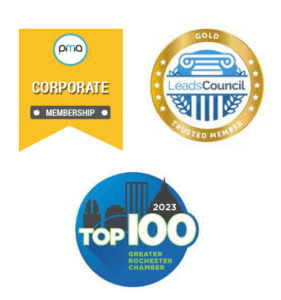You’re running a pay-per-call campaign, and the calls are pouring in. Everything seems to be going as planned until a call goes to voicemail and the caller doesn’t leave a message. Suddenly, your mind fills with questions:
- Did that call come from my pay-per-call partner?
- Am I going to be charged for that call since it didn’t meet the duration?
- Was that a good lead?
- Can I call them back?
- If I call them back, will that violate privacy laws like TCPA?
It’s a lot to unpack, but we’re here to walk you through callback best practices.
What is a callback in pay-per-call?
In the pay-per-call industry, the term callback refers to placing an outbound call or sending a text message to a consumer who had previously placed a call or made an inquiry with a business.
For pay-per-call advertisers, callbacks are most commonly used when the advertiser misses a call or the call disconnects before the advertiser has a chance to answer or qualify it.
For the publisher, affiliate, or pay-per-call network that generates calls, callbacks are usually used to qualify and transfer leads that came through form fills or other lead generation methods.
What is callback etiquette?
Callbacks can seem straight-forward: a consumer calls a business, the advertiser misses the call, the advertiser returns the consumer’s call. However, callbacks have the potential to violate both pay-per-call agreements and federal regulations.
Before you decide that a callback is necessary, ensure that your use of callbacks is neither fraudulent nor violates any laws or regulations.
What is fraudulent callback behavior?
To ensure the pay-per-call industry remains fair to both the advertisers who buy calls and the providers that generate call traffic, the following callback behaviors are widely agreed upon and infractions are adjusted at billing:
- Advertisers will be billed for calls that reach voicemail and calls that reach the connected duration requirement while on hold
- Advertisers may not intentionally disconnect calls before they reach voicemail and then place a callback to the consumer
- Advertisers cannot answer a call and immediately disconnect with the intention to place a callback to the consumer
- Advertisers cannot abuse the duration period by taking a message and offering to call the consumer back before the call reaches duration and becomes billable
When are callbacks okay for advertisers?
Of course, not all callbacks placed by the advertiser are fraudulent. In fact, sometimes callbacks are not only permissible, but also important to ensure the advertiser is following up with each lead and getting the most out of their pay-per-call campaign.
Here are some cases where callbacks are permitted:
- Voicemail follow-up – most pay-per-call partners charge for calls that reach voicemails, so prudent advertisers should follow-up with interested consumers who leave voicemail messages
- Legitimate missed connection – if the caller disconnects the call before the advertiser can answer the phone or before they reach voicemail
- Legitimate technical difficulty – if the call fails due to a technical malfunction on the caller’s end after it was answered but before it reaches the duration and becomes billable
The key word here is legitimate. As long as your business is not actively trying to work the system or scheming to get out of paying for a call, placing a callback will likely not violate your agreement with your pay-per-call provider.
Are callbacks TSR compliant?
For advertisers who place legitimate callbacks, one more question arises: whether the callback will be compliant with the Telemarketing Consumer Protection Act (TCPA) or the Telemarketing Sales Rule (TSR).
The TSR regulates the practices of telemarketers and outbound calls placed by businesses, including who they are permitted to call, how many times they can call one number, and what information they must disclose.
Under the TSR, businesses are not permitted to place an outbound call to any consumer who is listed in the National Do Not Call Registry. There are a few exemptions to this part of the rule, including exemptions for consumers with whom they have an “established business relationship.”
Consumers who place an inbound call to a business are placing an “inquiry” and establishing a business relationship, so legitimate callbacks fall within this exemption. Advertisers can call the consumer back for up to three months after their initial inquiry (the consumer’s inbound call), unless the consumer asks the business not to call again.
You can read more about this exemption here, under question 10.
The TSR also protects consumers from calls in specific industries. Advertisers will need to ensure they comply with the specific rules outlined in the TSR for their particular industry (see those here).
If you have any questions or concerns about compliance with the TSR, it is best to ask your pay-per-call provider or research the issue further before placing a callback to avoid violations and fines.
Are callbacks TCPA compliant?
The TCPA restricts certain telemarketing practices, and states that outbound call sources cannot contact consumers on the national Do-Not-Call Registry.
As long as the callback in question is not an autodialed telemarketing call, TCPA compliance is only an issue regarding the Do Not Call registry lists. As with the TSR, the advertiser can place a callback to respond to anyone who first called the business. If that person asks not to be called again, the advertiser must honor that request to avoid violating the Do Not Call Registry and to comply with TCPA.
Summary: Callback Best Practices for Advertisers in Pay-Per-Call
As a pay-per-call advertiser, you don’t want to do anything that would violate your agreement with your pay-per-call provider – which could result in a termination of agreement and get you blacklisted from working with other providers – or any federal or state laws or regulations – which could result in hefty fines and reputation damage. Improper use of callbacks has the potential to violate both, so it’s crucial that you follow best practices when approaching callbacks.
To sum up, here is our list of callback best practices:
- Only call consumers who placed an inbound call to your business.
- Don’t place a callback to the same consumer more than once.
- Always honor consumers’ requests to not call them.
- Never try to get out of paying for calls by disconnecting the call or promising to call the consumer back before the call reaches the required duration.
- If in doubt, don’t make the callback. Be sure you clearly understand what is required of your business regarding the information you must disclose under the TSR.
- If possible, work to set the right call pacing with your pay-per-call provider so you only receive the number of calls your business can handle over a certain period of time. This reduces the chance you’ll miss a call and lessens the need for callbacks in the first place.






